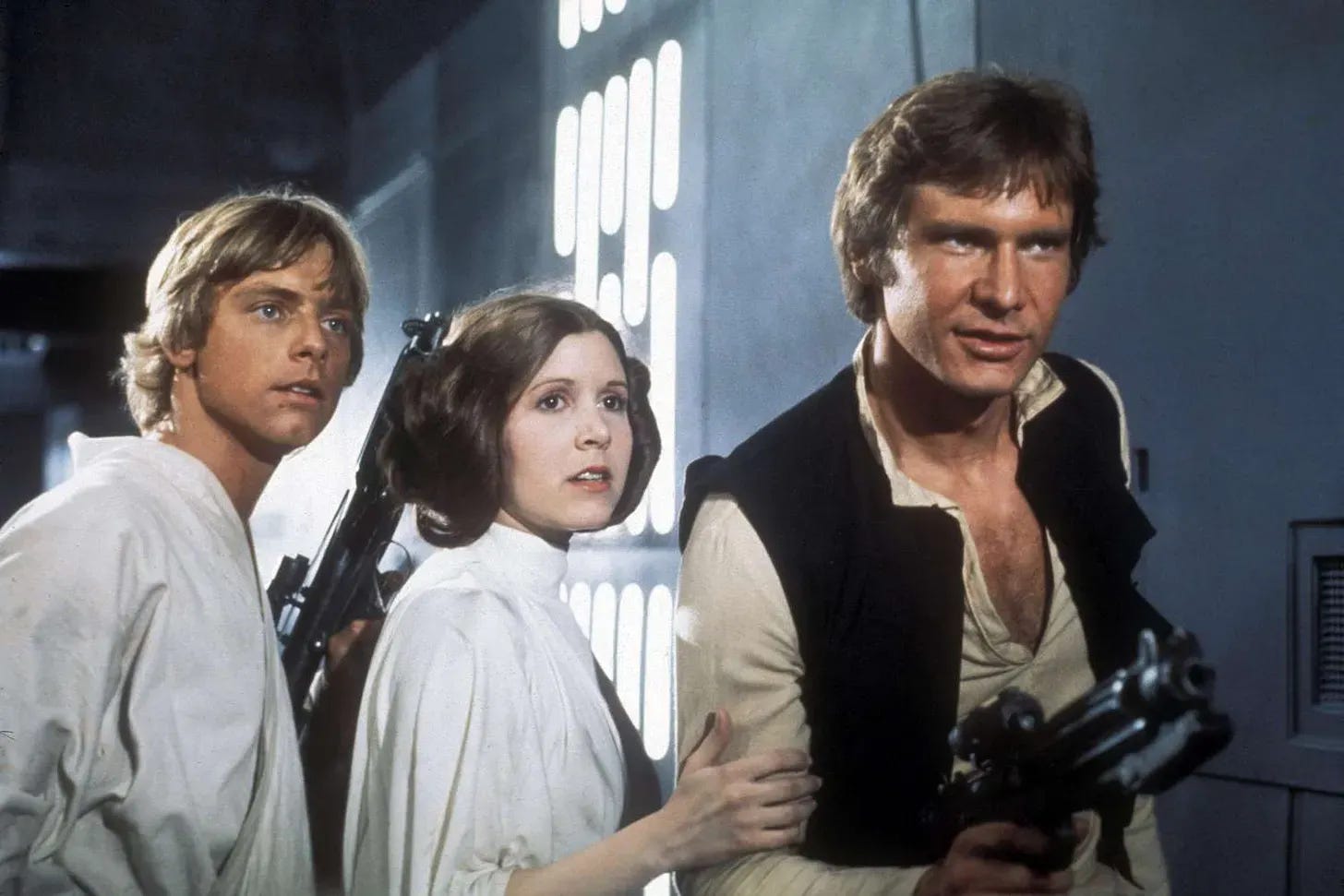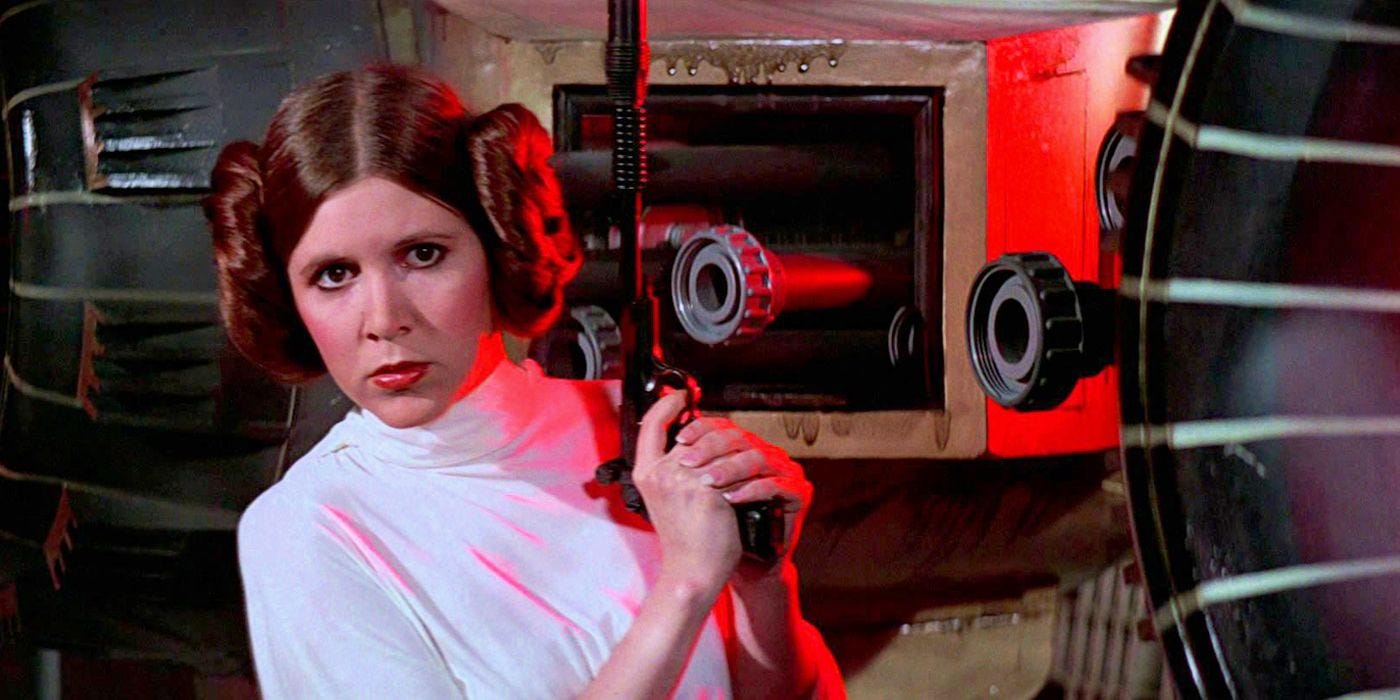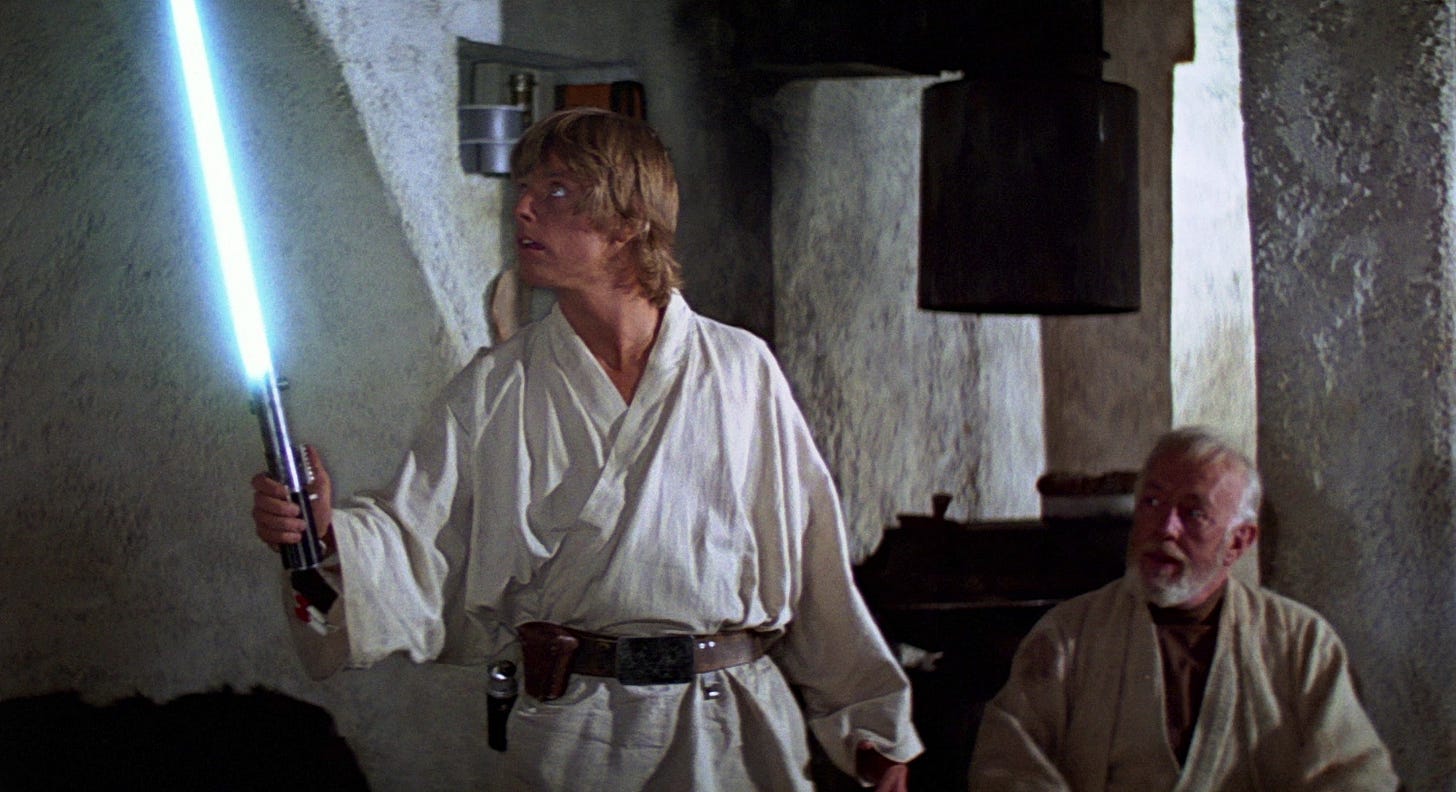The Star Wars re-watch: Part VI: Star Wars (Episode IV: A New Hope).
The Force is strong with this one.
Happy Star Wars Day!
If you’re looking for the rest of the series, you can find it here.
As always? Thanks for reading Off-Balance!
Ryan.

It is the spring of 1976 and if one dares to venture far enough into the Tunisian desert, they will find George Lucas.
He has a measure of pedigree already in his back pocket, yes - just three years removed the success of his previous film, American Graffiti - and weeks out from his 31st birthday, nobody could reasonably doubt his artistic purpose, either: his unmistakable blend of influences, Flash Gordon, Akira Kurosawa and not-so-long-ago Westerns, all collapsing inwards, the genesis, for his latest project - the space-set epic, Star Wars.
Things however, do not go smoothly.
The bad omens, seemingly omnipresent.
Sand (ever coarse and irritating) wreaks havoc on equipment and the rain, which dominates the second day of filming, counts itself as the first rainfall seen in the area in almost fifty years, immediately setting production back, alongside a host of other, mostly droid-related mechanical troubles
Lucas’ directorial style, terse and impersonal, does no favours for a cast and crew who are openly baffled by his material - Alec Guinness, most infamously - and come post, the problems continue to compound.
Dissatisfied with large portions of the cut, Lucas brings abroad a trio of editors which include Paul Hirsch, Richard Chew and his then-wife Marcia. Marcia specifically, viewed by many as maybe the only collaborator of the beleaguered writer-director to counterbalance his oft-tunnel-visioned impulses, as they all dig in, around the clock, with release closing in, to practically resemble the film in the editing bay.
Meanwhile, the special effects team, at first unable to keep pace with Lucas’ seemingly esoteric vision, eventually see their portion of the budget balloon a so-reported thirty-five percent: their end result, driven in money-limiting practicality, primarily achieved through a mix of matte paintings and ingenuous prop work.
The film then, was eventually brought to a semblance of standard, though not without great trepidation.

So fraught, from the very beginning, anything less than B-movie obscurity seemed to be its ultimate destination: from the inscrutable world-building, the virtually unknown cast (Harrison Ford, by his own admission, had only recently moved on from carpentry, having finally found some solid footing as an actor) or Lucas’ (to pardon the phrase) relative lack of faith in the entire endeavour, despite his own commitment.
And as the legend goes, so burnt out, emotionally drained and physically exhausted - he spent time in hospital during filming - he straight up forget his long-gestating passion project was even playing in theatres.
Instead, he would briefly sojourn to Hawaii with Steven Spielberg (that trip, to eventually birth what would become, funnily enough, the Ford-starring Indiana Jones) and later walking the streets of Los Angeles, it was to see not just his film, lit-up on the marquee but the horde of a crowd, gathered to see it.
That night then, in mid-May of 1977, should one wish to indulge in a dash of well-earned lyricism, it could very well be viewed as something of an inflection point, a cultural crossroads having virtually no other 1-to-1 comparison.
Maybe, truly, the final moment in which anything Star Wars related was seen through a lens of relative anonymity.

With war raging, the Rebel Alliance has retrieved, at great cost, what could possibly tip the scales in their conflict against the Empire: the plans to the so-called Death Star, the Empire’s planet-destroying super-weapon and the weakness within it.
But it will not be a task easily won, as the determined Princess Leia (Carrie Fisher) learns, as she is captured by the Imperial agents Tarkin (Peter Cushing) and the Force-wielding cyborg Darth Vader (David Prowse/James Earl Jones).
Her call for help, answered by the smugglers Han Solo (Harrison Ford) and Chewbacca (Peter Mayhew), alongside the droids C-3P0 (Anthony Daniels) and R2-D2 (Kenny Baker). While next to them is the long-in-hiding Jedi, Obi-Wan Kenobi (Alec Guinness) and Luke Skywalker (Mark Hamill), a young farmer who Obi-Wan takes under his wing, his potential, matched only by his dreaming of adventure.
To defeat those actors of evil, they will, for the very fate of the galaxy depends on it, no matter the cost.
The film became an instant global phenomenon of course, endlessly quotable and visually revolutionary as it was, earning millions-upon-millions lightsaber-over-Empire-fist, while redefining adventure science fiction as a genre and not just film as a medium but the broader apparatus of entertainment wholesale - its reach, that profound.
As long-lasting, evidently, as it would become toxic and demoralizing.
Though perhaps that is what actually makes rewatching Star Wars, in trying to take it on its own merits, impossible as it may seem, such a fascinating exercise.
Not yet A New Hope, not yet bound to its two direct successors nor the larger franchise and the resulting lore, for better or worse. Not yet victim or beneficiary (depending on one’s perspective) of the numerous changes and alterations that would be brought upon the original trilogy over the following decades (this, to the point that an original print of the film, preserved and set to screen in June, is doing so to tremendous enthusiasm - reported to be the first time the initially as-released version will be publicly presented since 1978).
No, instead, it is an effort to simply trying to see Star Wars for what it is.
A neatly repackaged version of the Hero’s Journey, the operatic sheen notwithstanding, the archetypes that populate it and the fundamental competency, a single cut above, in which all those elements are delivered on.
It is the supporting pillars, in contrast, the colour, that are the aspects which made the film truly legendary: John Williams’ score, the duality of Prowse’s and Jones’ individual performances, each, elevating Vader to medium-icon status1 or the sheer, inherent spectacle it invites, sometimes quiet, other times, utterly bombastic.
It isn’t beyond reproach, again through its pacing or the general framework of its structure and the insistence, foolishly, incorrectly, by such a vocal minority that those original films were and remain artistically untouchable no doubt accounts for the shadow that hangs over so much of the franchise at present.
That is what Star Wars, A New Hope, is too: unable to completely avoid that black hole vacuum.
But it endures, strong on its own, as much as it laid the table for something more to succeed it… a reminder that every victory comes at a cost.




